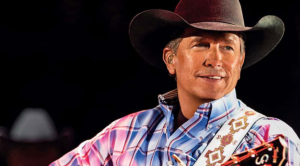
First released in 1983, “Right or Wrong” appeared on Strait’s third studio album of the same name. This period, the early 1980s, was a fascinating one for country music. The genre was experiencing a shift, moving away from the ornate production styles of the “outlaw country” era and embracing a more stripped-down, back-to-basics sound. Strait, often hailed as the “King of Country”, was right at the forefront of this movement.
Background
“Right or Wrong” itself isn’t a Strait original. It’s a captivating cover of a much older song, with roots tracing back to the 1920s. The original composer, Haven Gillespie, deserves a tip of the ten-gallon hat. Gillespie’s version likely wouldn’t be on most people’s playlists today, but Strait’s interpretation breathed new life into the song.
There were other notable renditions before Strait’s. Western swing legend Bob Wills and his Texas Playboys had a popular version, showcasing the song’s jazzy undercurrent. However, Strait’s take resonated with a new generation of country fans. His signature smooth vocals, devoid of affectation, delivered the lyrics with a quiet intensity that perfectly captured the song’s emotional core.
Those lyrics deserve a closer look. On the surface, “Right or Wrong” seems like a simple tale of heartbreak. The narrator witnesses his former lover, seemingly happy with someone new. But there’s a subtle complexity woven into the verses. The narrator doesn’t dwell on bitterness or blame. Instead, there’s a quiet acceptance, a bittersweet acknowledgment that love’s path can be unpredictable. Lines like “Maybe it’s better this way, I don’t know” and “Though it hurts like fire, I won’t deny, you look happy now” showcase this emotional nuance.
Musically, Strait’s “Right or Wrong” is a masterclass in understated elegance. The arrangement is clean and uncluttered, with a prominent role for the steel guitar, adding a touch of twang without overwhelming the melody. The steady rhythm section lays down a solid foundation, allowing Strait’s voice to take center stage. It’s a testament to the song’s strength that it doesn’t rely on flashy production tricks to hold your attention.
The impact of “Right or Wrong” can’t be overstated. It became Strait’s second consecutive number one hit on the Billboard Hot Country Singles chart, solidifying his position as a rising star. More importantly, it helped define the sound of “neotraditional country,” a subgenre that emphasized traditional instrumentation and songwriting while incorporating contemporary production elements.
So, the next time you hear “Right or Wrong”, take a moment to appreciate its place in country music history. It’s a song that bridges eras, showcasing the enduring power of a well-crafted melody, relatable lyrics, and an artist with an unmatched ability to deliver a heartfelt performance.